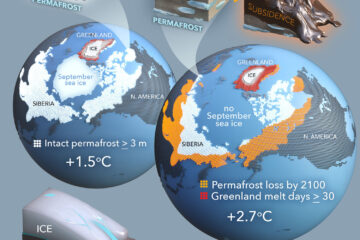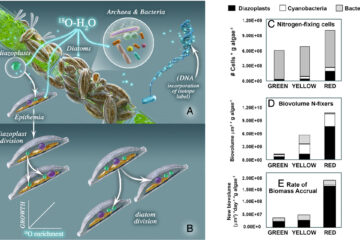Decadal warming causes a consistent and persistent shift from heterotrophic to autotrophic respiration in contrasting permafrost ecosystems
Soil carbon in permafrost ecosystems has the potential to become a major positive feedback to climate change if permafrost thaw increases heterotrophic decomposition. However, warming can also stimulate autotrophic production leading to increased ecosystem carbon storage—a negative climate change feedback. Few studies partitioning ecosystem respiration examine decadal warming effects or compare responses among ecosystems. Here, we first examined how 11 years of warming during different seasons affected autotrophic and heterotrophic respiration in a bryophyte-dominated peatland in Abisko, Sweden. We used natural abundance radiocarbon to partition ecosystem respiration into autotrophic respiration, associated with production, and heterotrophic decomposition. Summertime warming decreased the age of carbon respired by the ecosystem due to increased proportional contributions from autotrophic and young soil respiration and decreased proportional contributions from old soil. Summertime warming’s large effect was due to not only warmer air temperatures during the growing season, but also to warmer deep soils year-round. Second, we compared ecosystem respiration responses between two contrasting ecosystems, the Abisko peatland and a tussock-dominated tundra in Healy, Alaska. Each ecosystem had two different timescales of warming (<5 years and over a decade). Despite the Abisko peatland having greater ecosystem respiration and larger contributions from heterotrophic respiration than the Healy tundra, both systems responded consistently to short- and long-term warming with increased respiration, increased autotrophic contributions to ecosystem respiration, and increased ratios of autotrophic to heterotrophic respiration. We did not detect an increase in old soil carbon losses with warming at either site. If increased autotrophic respiration is balanced by increased primary production, as is the case in the Healy tundra, warming will not cause these ecosystems to become growing season carbon sources. Warming instead causes a persistent shift from heterotrophic to more autotrophic control of the growing season carbon cycle in these carbon-rich permafrost ecosystems.


